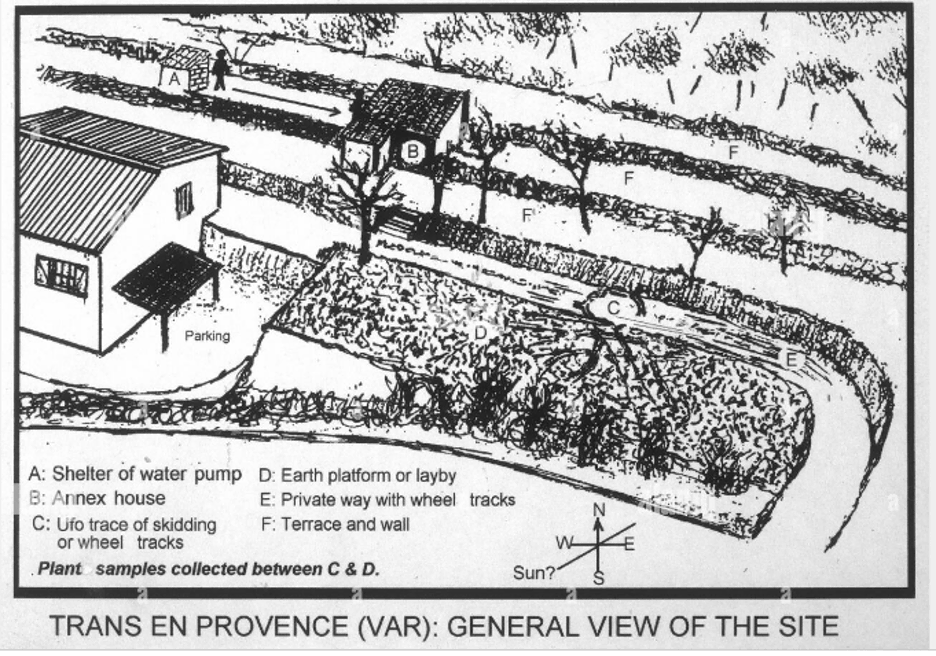
Summary
The Trans-en-Provence case took place on January 8, 1981 outside the town of Trans-en-Provence, France, and involved a UAP incident that left alleged burnt residue in a nearby field. Popular Mechanics described the event as "perhaps the most completely and carefully documented sighting of all time." Newsweek listed the incident as No. 12 in its article “Most Credible UFO Sightings and Encounters in History, According to Research.” According to Newsweek, French police, as recently as 2012, claimed in an article in the local news that they believe the case remains important to this day.
Sighting
Farmer Renato Nicolaï heard a strange whistling sound while working on his property on January 8, 1981. He allegedly saw a lead-colored saucer-shaped object that had the shape of two saucers– one inverted on top of the other. He said he also saw under the UAP, two propulsion pieces to help lift it off like feet and two trapdoors. He claimed the object took off almost immediately, and flew above the treeline and left burn marks on the ground where it had supposedly sat. He told his wife of the incident when she returned home that evening. When she thought he was joking, he showed her where the UAP allegedly left marks in the ground. The next day, he told his neighbors who urged him to contact local authorities.
He notified the local gendarmerie (France’s national police) of the event the next day. The gendarmerie proceeded to interview Nicolaï, photograph the area, and collect soil and plant samples from the field. The case was later sent to GEIPAN (Groupe d'Étude des Phénomènes Aérospatiaux Non-identifiés) for review.
Analysis
GEIPAN analysis said the ground had been compressed by a mechanical pressure of about 4 or 5 tons, and heated to between 300 and 600 °C . They found trace amounts of phosphate and zinc in the sample material, and analysis of resident alfalfa near the landing site showed chlorophyll levels between 30 percent and 50 percent lower than expected. The surrounding vegetation showed slight damage from the incident.
Nicolaï’s first thoughts on the UAP was that it was an experimental military device since he was within close proximity to the Canjuers military base. Police ruled this out, as there were no reported military flights at the time.
No concrete explanation was ever found, but after GEIPAN investigated the site they wrote in its report that “the causes of these degradations have not been determined but the hypothesis of an intense electric field can be envisaged.”
France’s COMETA report said “According to Professor Michel Bounias of the ecology and plant toxicology laboratory of INRA [National Institute for Agronomic Research] who performed the analyses, the cause of the profound disturbances suffered by the vegetation present in that ecosystem could likely be a powerful pulsed electromagnetic field in the high frequency (microwave) range. Studies and research are still being conducted in regard to this case and numerous leads have been explored.”